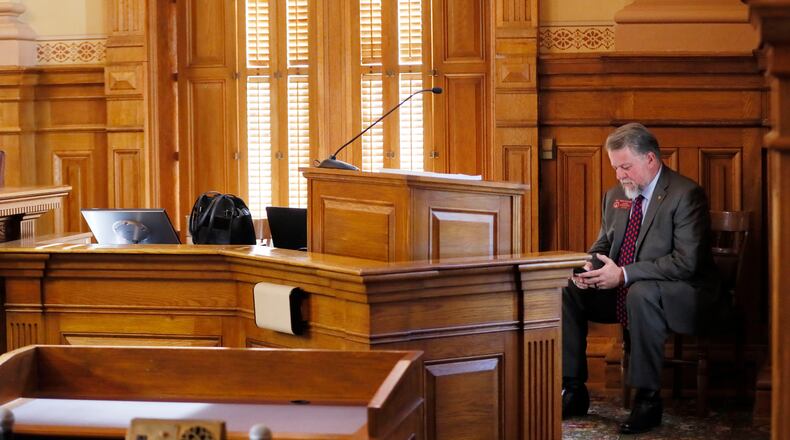Georgia House budget writers quickly approved a midyear spending plan Wednesday that would include extra funding for public health programs that have been on the front lines of fighting the COVID-19 pandemic since March.
The House Appropriations Committee backed the $26.6 billion midyear budget for fiscal 2021 — which runs through June 30 — and the measure will be up for a vote by the full chamber Thursday. The Senate is expected to move quickly on it so the state is funded for the next several months in case the General Assembly has to take a break because of the pandemic, as it did last year.
The largest increase is in education, where the House is going along with Gov. Brian Kemp’s proposal to backfill 60% of the spending reductions lawmakers approved last year, when they cut 10% because of fears that state revenue would plummet due to the pandemic. That didn’t happen, and the midyear budget restores $567 million in cuts to k-12 schools.
The state would also pay for 500 new school buses. About one-third of the 15,000 in service statewide have exceeded their recommended life span, said House Appropriations Chairman Terry England, R-Auburn.
Kemp and lawmakers have faced criticism in recent weeks for not boosting state funding for the Department of Public Health before and during the COVID-19 pandemic.
If lawmakers followed Kemp’s recommendations, the state would be spending 13% less per resident on public health in the coming year than it did a decade ago.
Demands on the local health agencies, and on Georgia’s public health system in general, have increased in recent years. Public health advocates have long complained about inadequate funding for AIDS/HIV prevention, controlling chronic illnesses and other needs.
“There has been a good bit of talk about DPH not seeing a lot of new money within the state budget,” England said. “But it has to be remembered they have gotten a tremendous amount of federal dollars ... that have been doing most everything they need for the pandemic response.
“Much of this response has been handled with federal dollars.”
The state has collected a little more than $1 billion in additional federal funding, which has paid for such virus-related expenses as private laboratory testing, operations of the state’s labs, temporary “surge” staffing, personal protective equipment and an isolation unit for people who contracted the coronavirus. The federal money also covered expenses by the state’s 159 county health departments, which normally depend on state appropriations.
Democrats have been particularly critical of state public health funding.
State Sen. Michelle Au, a Johns Creek Democrat and anesthesiologist, told her Senate colleagues Wednesday that spending the money now puts a safety net in place not only to help Georgians during the pandemic, but also the next time there is a crisis.
“Every time we leave our house and don’t get sick from the air we breathe, every time we buckle our kids into their car seats, every time you’re not seated next to someone smoking a cigarette on a plane, that is public health in action working exactly the way it should, which is preventatively, seamlessly and invisibly,” she said.
“As we look to the following year and consider our public health funding,” Au said, “realize that the value of this investment we put in early compounds over time.”
House budget writers have been sensitive to the issue, and they added money for a chief medical officer, deputy commissioner and a chief data officer. They also added $18 million to modernize and replace the computer system that tracks immunizations statewide, which health officials say wasn’t designed to deal with a pandemic and which has been heavily criticized.
Lawmakers also proposed $15 million more for the state’s AIDS Drug Assistance Program, which provides HIV/AIDS medications to low-income people.
House budget writers agreed to a $19 million temporary payment hike to nursing homes, which will allow the owners to also collect more federal funding.
“We are doing what we need to do to take care of the most fragile among us,” England said.
If approved by the Senate, the midyear budget would provide 10% pay raises to adult and juvenile prison guards. Prisons and juvenile facilities have extremely high turnover rates.
An entry-level corrections officer at an adult or juvenile detention center makes $27,936. With the increase, officers starting out will make $30,730.
Staff writer Maya T. Prabhu contributed to this article.
By the numbers
$26.6 billion: Suggested midyear budget for fiscal 2021 backed by the House Appropriations Committee
10%: Last year’s budget spending cuts
$567 million: Amount the midyear budget restores to k-12 schools
About the Author
Keep Reading
The Latest
Featured



